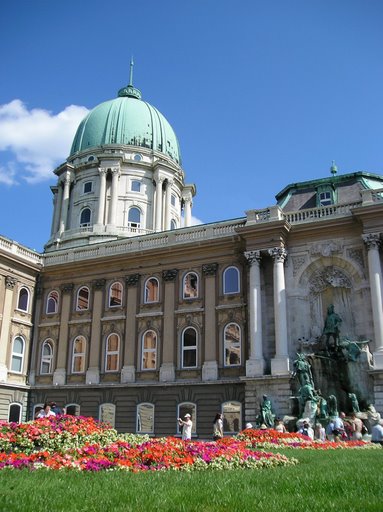|
Budapest, Hungary.

The conference will be held at the Budapest Tech, Becsi ut 96/B., 1034
Budapest. Budapest Tech can be easily reach by bus No. 86, 109, 160, 206,
260 and by tram No. 17. Check out the
map
of the area.
Official Hotels recommended by the organizers: HOTEL MERCURE BUDA and HOTEL
RAMADA PLAZA.
Send
this registration form to book your hotel room at a special price
The
following text and the links is received by
www.wikipedia.com
Budapest is the capital city
of Hungary.
With green filled parks full of charming pleasures, museums that will
inspire, and a pulsating nightlife that is on par to its European
counterparts, Budapest is one of Europe's most delightful and enjoyable
cities.
Although Budapest is administratively divided into 23
numbered districts, always written in Roman numerals, it can most simply be
divided into the two cities of which it is comprised (Buda and Pest) and one
historic district:

-
Buda - The hilly West side
of the Danube (Districts I-III, XI-XII).
-
Castle Hill - District I of
Buda, the oldest part of the city containing the eponymous Castle and
many of Budapest's best-known attractions.
-
Pest - The flat East side
of the Danube, covering the modern commercial core of the city(Districts
IV-IX).
Regarded by many as one of world's most beautiful cities,
travelers are quickly recognising the appeal of Budapest, with a tourism
growth of approximately 20 million visitors per year.
Consisting of two very different cities,Buda
on the west bank of the Danube River and
Pest
on the east bank, Budapest (pronounced "BOO-dah-pesht") offers travelers
Viennese romanticism at an affordable price. However, Budapest is unique in
its own right. Hungarians are proud of what this ancient capital has to
offer and its contributions to European culture, especially in the field of
music, a language one doesn't need to speak to appreciate. Budapest first
appeared on the world map when the Romans founded the town of Aquincum
around 89 AD, in what is today Óbuda. It soon became the capital of the
province of Lower Pannonia, and the Romans even founded a proto-Pest known
as Contra Aquincum on the other side of the river.
The Romans were eventually driven out by the Bolgars from
present-day
Bulgaria, who left behind the name Peshta (today's Pest), but
were replaced around 900 by the Magyars, who went on to found the kingdom of
Hungary. The Mongols dropped in uninvited in 1241, but the Magyars bounced
back and built the Royal Castle that still today dominates Buda in 1427. In
1541, Buda and Pest fell to the Ottomans and stayed in the hands of the
Turks until 1686, when the Austrian Habsburgs conquered the town. Now at
peace, both sides of the river boomed, and after an abortive Hungarian
revolution in 1848–49, the great Compromise of 1872 made Budapest the united
capital of the Hungarian half of the Dual Monarchy of Austria-Hungary.
Budapest emerged from World War I battered, but now the
capital of an independent Hungary, and its population reached one million by
1930. Air raids and a terrible three-month siege towards the end of World
War II resulted in the death over 38,000 civilians, and up to 40% of
Budapest's Jewish community were murdered during the Holocaust. A total of
400 000 Jews in the area were murdered by the Nazis and their Nyilas
sympathizers. One man noted in history was Raoul Wallenberg, a Swedish
humanitarian sent to Hungary under a diplomatic cover, who tried to make a
difference by distributing Swedish passports to as many Jews as possible.
After the war, the city recovered and became a showcase
for the more pragmatic policies of Hungary's hard- line Communist
government. It was, however, site of the 1956 Hungarian uprising against
unpopular policies such as collectivisation. The revolution against
communist rule only ended when the Soviets sent in the tanks as they felt
Hungary slipping out of their influence and control.Greenchills
13:39, 3 August 2008 (EDT) Today's Budapest is by far the wealthiest and
most cosmopolitan city in Hungary and is increasingly popular with tourists.
In 1987, it was inscribed on the
UNESCO World Heritage List for the cultural and architectural
significance of the Banks of the Danube, the Buda Castle Quarter and
Andrássy Avenue.

Contact
us
|